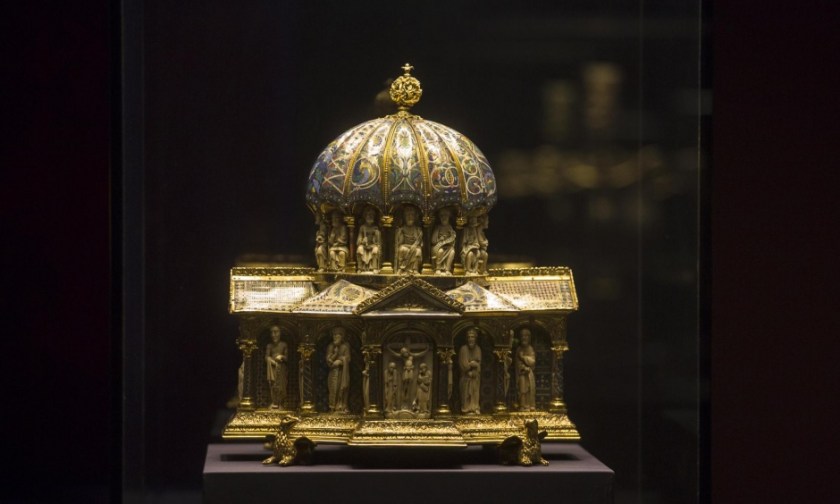
The United States Supreme Court has granted certiorari and will weigh in on a Nazi-era dispute over artworks, involving the sale of a collection of medieval artworks known as the Guelph Treasure. The collection is described as something out of a film: gold, silver, and jeweled liturgical objects from the Church of St. Blaine in Brunswick, Germany. Many of the objects were crafted in what is today present-day Germany, but other objects came from the Italian peninsula or the Byzantine empire.
Here’s a quick background on the dispute. The Welfenschatz, or Guelph trove is currently in the possession of the Prussian Cultural Heritage Foundation and has been claimed by successors of art dealers who were fleeing the holocaust. These objects were originally housed in the cathedral in Braunschweig, owned by the House of Guelph. During the First World War, the House of Guelph lost reign over Braunschweig and in the 1920s the pieces were sold to a consortium of Frankfurt art dealers, including 82 items in 1929. Later in 1935 the Prussian state, led by Hermann Goering, bought the remaining pieces of the treasure in what the claimants allege was a “genocidal taking”. In 2014, a German government commission found that the transaction was not a forced sale.
The claimants then brought suit in the United States. The current possessors, the Prussian Cultural Heritage Foundation have defended that action on the grounds that as a Foreign Government, they are immune from suit in the United States under the Foreign Sovereign Immunities Act. Claimants have argued that the actions of the Prussian government fall under one of the exceptions to that law, that the actions of the Prussians was a violation of International law, namely genocide. The Supreme Court has agreed to consider two issues:
- Whether suits concerning property taken as part of the Holocaust are within the expropriation exception to the Foreign Sovereign Immunities Act (FSIA). This is the legal treasure which gives the claimants a jurisdictional foothold to sue a foreign government in the United States, something that ordinarily is not allowed under American law.
- Whether a foreign state may assert a comity defense that is outside the FSIA’s “comprehensive set of legal standards governing claims of immunity in every civil action against a foreign state.” In essence the appellants are attempting to use the idea that Courts should refrain from entering into the realm of foreign policy in a broader way. At least that is how I understand that issue.
Nicholas O’Donnell, an attorney for the claimants stated:
[W]e are grateful for the opportunity to address the Supreme Court on these important questions about holding Germany accountable for its Nazi-looted art. A 1935 transfer from German Jews to notorious art looter and war criminal Hermann Goering is the quintessential crime against international law, regardless of Germany’s Holocaust distortion in defending this case. Germany seeks to eliminate recourse for Nazi-looted art and the Court will have the chance to answer this question of critical importance for Holocaust victims.
Being on the side of the possessors and having to defend that possession by justifying the acquisition by such an evil historical figure as Hermann Goering cannot be an easy legal argument. The Court will likely hear the case in the Fall, likely via telephone if the never-ending pandemic continues to outwit the hapless policy makers here in the United States. The case could impact the future of Nazi-era claims, and claims for wrongdoing more generally during similar periods of atrocity. The Court will also hear a case involving Hungarian nationals who lost property during World War II.
Stewart Ain, Supreme Court to Hear Guelph Treasure Case, Jewish Week New York (Jul. 2, 2020), https://jewishweek.timesofisrael.com/supreme-court-to-hear-guelph-treasure-case/.
Christopher F. Schuetze, U.S. Supreme Court to Rule on Medieval Treasure Bought by Nazis, The New York Times, Jul. 10, 2020, https://www.nytimes.com/2020/07/10/world/europe/guelph-treasure-germany-us.html.
Supreme Court agrees to hear Nazi art case, AP NEWS (Jul. 2, 2020), https://apnews.com/3fe60cf650bee8997d7f091fe2e8d84e.






